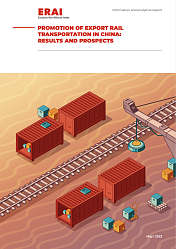The European road freight market is recovering well from the pandemic but also struggling with some serious dysfunctions brought about by supply chain disruption following Covid-19, labour shortages and Brexit, according to a report by Transport Intelligence (Ti).
Meanwhile, rapid changes continue to transform the market as digitalisation gathers pace among the market leaders.
Ti’s latest market forecasts show that, while the European road freight market will have nearly recovered fully from the pandemic by the end of 2021, it will still be 1.5% smaller than it was in 2019. But the market did record a growth rate of 4.7% in 2021. By 2025 the market is expected to be a full 10.1% larger than in 2019 and to reach a total size of €378.1 billion.
Ti’s research also shows that during the pandemic, European FTL was growing faster than LTL. «The supply chain disruptions and the capacity crunch during the pandemic drove FTL growth, with companies booking more FTL movements to guarantee access to capacity. Nevertheless in 2021 the LTL market is expected to account for 70.8% of the total market and nearly 71.3% by 2025,» it noted.
The new report also shows that while both the international and domestic European road freight markets are recovering from pandemic steadily, they are both still smaller than pre-pandemic (2019) levels. By the end of 2021 the domestic market is still expected to be 1.4% smaller than it was in 2019, while the international market is expected to be 1.6% smaller.
Driver shortage
Behind this underlying picture of solid but ongoing recovery there are a number of issues that are challenging road freight operators — one of the most significant challenges being the driver shortage.
The report shows that while this is most acute in the UK, there is a wider shortage across Europe of over 400,000 drivers. Over the medium term, there are a number of strategies highlighted in the report to deal with this but it suggests short term disruption as hauliers and shippers compete to attract the drivers to secure the capacity they need over the peak season.
Additionally the report shows that the European market is also dealing with significant pressure from ongoing Covid and supply chain disruption and widespread interventions in the market by governments in terms of regulations, customs changes (Brexit) and fiscal and monetary stimuluses driving inflation.
Rapid innovation
Amid all the challenges of 2021, Ti’s report also highlights the extent to which the European road freight market is moving through a period of rapid innovation and change as digitalisation gathers pace among the market leaders.
The report sets out the latest market map for the ever-evolving digital freight space and examines how digital forwarders, marketplaces and TMS providers are all competing to capture more and more of the value chain. The eight case studies of major digital players included in the report highlight the high level of activity in the digital space with 12 major M&A deals taking place since 2017 and a constant raft of new innovations being rolled out by these players.
Michael Clover, Ti’s Head of Commercial Development, concluded: «The European road freight market is going through a period of dynamic change as we look ahead to 2022. The market is fighting to respond to the challenges of the pandemic and it’s knock on effects while dealing with the major constraint of driver shortages and disruption in the upstream supply chain.
«As ever, the market leaders are looking to technology and innovation to help alleviate the challenges of operating under heavy capacity constraints by increasing the efficiency of day to day operations and of movements across borders as new controls are expected for EU to GB trade as of January 1st».




